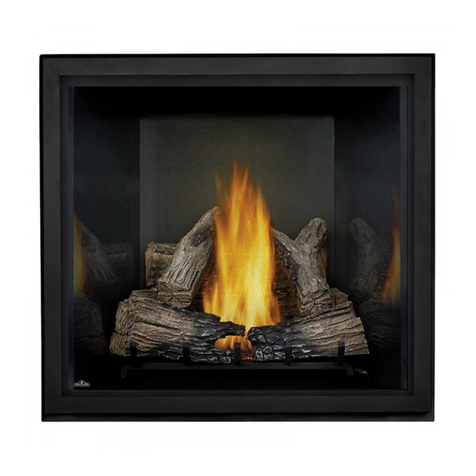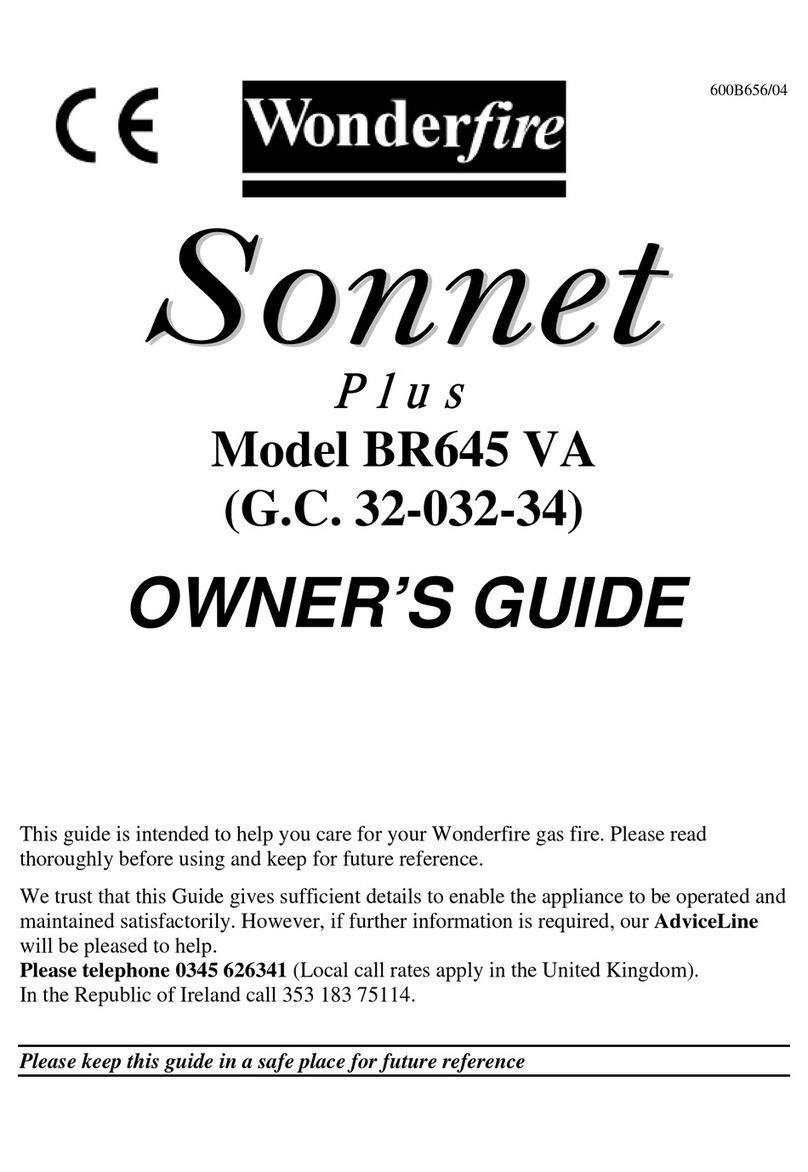
32
Safety Precautions
FOR SAFE INSTALLATION ANDOPERATION OF YOUR “ENVIRO” HEATER,
PLEASE CAREFULLY READ THE FOLLOWING INFORMATION:
• All ENVIRO gas- red appliances must be installed in
accordance with their instructions. Carefully read all the
instructions in this manual rst. Consult the building
authority having jurisdiction to determine the need for a
permit prior to commencing the installation.
• NOTE: Failure to follow these instructions could cause
a malfunction of the replace, which could result in death,
serious bodily injury, and/or property damage.
• Failure to follow these instructions may also void your
re insurance and/or warranty.
GENERAL
• Installation and repair should be done by a quali ed
service person. The appliance should be inspected before
the rst use and, at least, annually by a quali ed service
person. More frequent cleaning may be required due to
excessive lint from carpeting, bedding material, etc. It
is imperative the control compartments, burners and
circulating air passageways of the appliance be kept
clean.
• Due to high temperatures, the appliance should be
located out of high traf c areas and away from furniture
and draperies.
Children and adults should be alerted to the
hazards of high surface temperatures and should
stay away to avoid burn or clothing ignition.
• Young children should be carefully supervised when in
the same room as the appliance. Toddlers, young children
and others may be susceptible to accidental contact
burns. A physical barrier is required if there are at risk
individuals in the house. To restrict access to a replace
or stove install an adjustable safety gate to keep toddlers,
young children and other at risk individuals out of the
room and away from hot surfaces. Any safety screen,
guard, or barrier removed for servicing an appliance must
be replaced prior to operating the appliance.
• Clothing or other ammable materials should not be
placed on or near the appliance.
• A barrier designed to reduce the risk of burns from the
hot veiwing glass is provided with this appliance and shall
be installed for the protection of children and other at-risk
individuals. If the barrier becomes damaged, the barrier
shall be replaced with the manufacturer’s barrier for this
appliance
FOR YOUR SAFETY
• Installation and service must be performed by a quali ed
installer, service agency or gas supplier.
• This installation must conform to local codes or, in the
absence of local codes, with the National Fuel Gas Code,
ANSI Z223.1/NFPA 54, or the Natural Gas and Propane
Installation Code, CSA B149.1.
• To prevent injury, do not allow anyone who is unfamiliar
with the stove to operate it.
•To prevent injury, if the pilot or pilot and burners
have gone out on their own, open the glass door and
wait 5 minutes to air out before attempting to re-
light the stove.
• Always keep the area around these appliances clear of
combustible material, gasoline and other ammable liquids
and vapours.
• These appliances should not be used as a drying rack for
clothing or for hanging Christmas stockings/decorations.
• Due to the paint curing on the stove, a faint odor and slight
smoking will likely be noticed when the stove is rst used.
Open a window until the smoking stops.
Always connect this gas stove to a vent system and vent to
the outside of the building envelope. Never vent to another
room or inside the building. Make sure the speci ed vent
pipe is used, properly sized and of adequate height to
provide suf cient draft. Inspect the venting system annually
for blockage and signs of deterioration.
WARNING: Failure to position the parts in accordance
with the diagrams in this booklet, or failure to use only
parts speci cally approved with this appliance, may result in
property damage or personal injury.
WARNING: Do not operate with the glass front removed,
cracked or broken. Replacement of the glass should be done
by a licensed or quali ed service person.
• Never use solid fuels such as wood, paper, cardboard, coal,
or any ammable liquids, etc., in this appliance.
• Do not use this appliance if any part has been under water.
Immediately call a quali ed service technician to inspect the
appliance and to replace any part of the control system or
any gas control which has been under water.
• Do not abuse the glass by striking it or slamming the door
shut.
• If the Berkeley unit is pulled out of its installation, and
the vent-air intake system is disconnected for any reason,
ensure that the vent-air intake pipes are reconnected and
re-sealed in accordance to the instructions noted in initial
inStallation - direct vent
HOT GLASS WILL
CAUSE BURNS
DO NOT TOUCH GLASS
UNTIL COOLED.
NEVER ALLOW CHILDREN
TO TOUCH GLASS.
A barrier designed to reduce the risk of burns from the
hot viewing glass is provided with this appliance and shall
individuals.




























